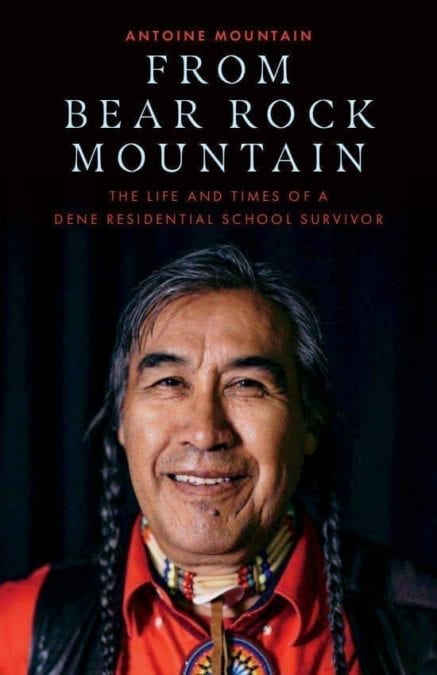Antoine Mountain hopes his story will help Canadians, as well as an international audience, wrap their heads around what happened to Indigenous peoples in this country.
 Mountain's memoir, From Bear Rock Mountain: The Life and Times of A Dene Residential School Survivor, was published at the end of May by Brindle and Glass Publishing.
Mountain's memoir, From Bear Rock Mountain: The Life and Times of A Dene Residential School Survivor, was published at the end of May by Brindle and Glass Publishing.
"I had been wanting to write something like this, a life story or memoir as it is termed, for quite a number of years,"said Mountain, "having already been doing more or less social and entertainment commentary in News/North with the A Mountain View column now for over 15 years.”
He said the book's release date, coinciding with the release of the Missing and Murdered Indigenous Women and Girls report, is meaningful.
"When I did my reading at the NorthWords gala, I made sure to mention that the genocide that's mentioned in that report coincides with my focus in my book on the cultural genocide in Canada, which can only be compared to the Holocaust that the Jewish people went through in the Second World War.”
He said he hopes his book can take a wide view of conflict and oppression, to help readers look beyond some of the rhetoric that often comes up in such conversations.
"If you want to look at it in today's terms, looking at Israel and Palestine, it's more than simply an ‘us and them situation'—it's more about the human condition,"said Mountain.
"That's the kind of direction I want people to look at.”
The book's release, pairing with the report's, is also significant for Mountain on a personal level, relating to how his book began to take shape five years ago.
Mountain was working on a series of paintings in Calgary and found himself struck by the face of a Dene woman on one of the canvases.
"The following morning, I got the news that one of my nieces, her daughter was brutally murdered in Fort Good Hope, one of two murders that happened within four years in that small community,"said Mountain.
He went on a two-week writers' retreat in Halifax soon after and, "as soon as I sat down with my computer there, everything just started coming out.”
He kept travelling, writing and researching his book over the next three years and wound up with what he hopes is an accessible, readable, informative and entertaining book on his story and the story of the times he grew up in.
It follows his upbringing around Fort Good Hope, his youth spent in residential school and the changing North in which he grew up. He draws on world events and even Greek myth to contextualize his story and that of Indigenous peoples.
In a blurb for the book, NWT author Richard Van Camp said, "(it is) braided with the Northern spirit and is a treasure of knowledge for the world. I am in awe of his talent, his humility, his gifts.”
The chapters are short—often just one page—and the tone is conversational. There are more than 80 photographs and Mountain sees that as an entry point for readers who might not be inclined to sit down and start at page one—they can instead find an interesting picture and take it from there.
"I am pleased that this will at least help in a way to put the whole issue of cultural genocide in the forefront,"said Mountain.